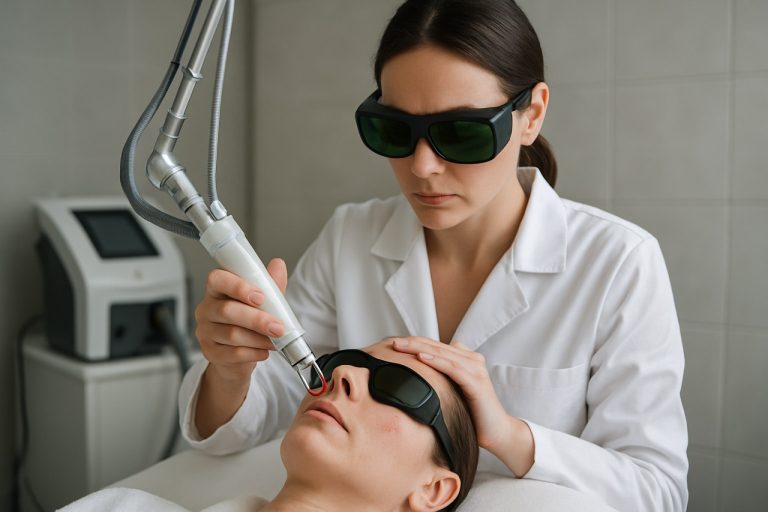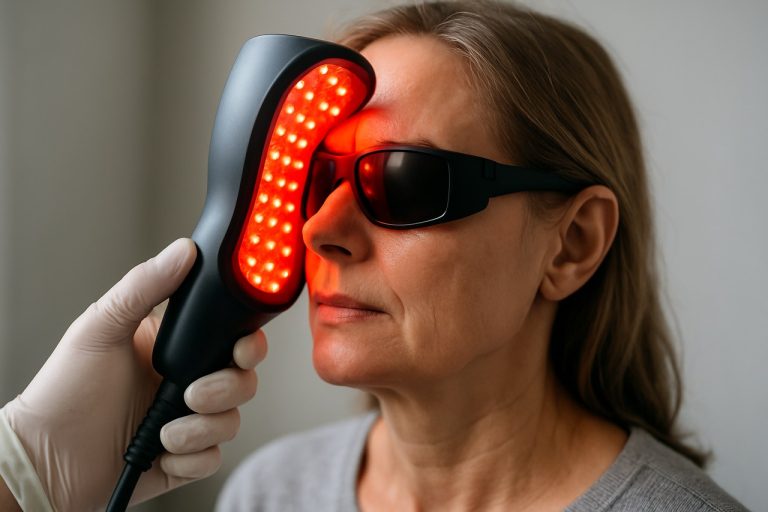
Quantum Optics Imaging Systems in 2025: Unleashing Unprecedented Resolution and Sensitivity for Next-Gen Applications. Explore How Quantum Technologies Are Transforming Imaging Across Industries.
- Executive Summary & Key Findings
- Market Size, Growth Rate, and 2025–2030 Forecasts
- Core Technologies: Quantum Entanglement, Squeezed Light, and Single-Photon Detection
- Competitive Landscape: Leading Companies and Innovators
- Emerging Applications: Healthcare, Defense, and Industrial Inspection
- Regulatory Environment and Industry Standards
- Supply Chain and Component Advancements
- Investment Trends and Funding Landscape
- Challenges: Scalability, Integration, and Commercialization
- Future Outlook: Disruptive Potential and Strategic Recommendations
- Sources & References
Executive Summary & Key Findings
Quantum optics imaging systems are at the forefront of next-generation imaging technologies, leveraging quantum properties of light—such as entanglement, squeezing, and single-photon sensitivity—to achieve unprecedented resolution, sensitivity, and information security. As of 2025, the field is transitioning from laboratory demonstrations to early-stage commercial deployments, with significant investments from both established photonics companies and quantum technology startups.
Key industry players include Thorlabs, Inc., a global supplier of photonics equipment, which has expanded its quantum optics product line to support research and prototyping in quantum imaging. ID Quantique, a pioneer in quantum photonics, is commercializing single-photon detectors and quantum random number generators, both critical components for quantum imaging systems. Hamamatsu Photonics K.K. continues to advance its single-photon avalanche diode (SPAD) arrays and photomultiplier tubes, enabling higher sensitivity and faster imaging speeds. Additionally, Carl Zeiss AG and Leica Microsystems are exploring quantum-enhanced microscopy for biomedical and materials science applications.
Recent milestones include the demonstration of quantum ghost imaging and quantum LiDAR prototypes, which utilize entangled photons to image objects with fewer photons and under challenging conditions such as low light or high background noise. These advances are being translated into early commercial products for security, remote sensing, and medical diagnostics. For example, quantum-enhanced imaging is being tested for non-invasive tissue diagnostics and high-contrast imaging in microscopy, with pilot projects underway in collaboration with leading research institutes and hospitals.
The outlook for the next few years is marked by rapid technological maturation and growing market interest. The integration of quantum imaging modules into existing optical platforms is expected to accelerate, driven by demand for higher performance in sectors such as defense, healthcare, and autonomous vehicles. Standardization efforts, led by industry consortia and organizations such as EPIC – European Photonics Industry Consortium, are underway to ensure interoperability and foster ecosystem growth.
In summary, quantum optics imaging systems are poised for significant breakthroughs and broader adoption between 2025 and 2028, as component performance improves, costs decrease, and new use cases emerge across scientific, industrial, and commercial domains.
Market Size, Growth Rate, and 2025–2030 Forecasts
Quantum optics imaging systems, leveraging the principles of quantum mechanics to achieve unprecedented sensitivity and resolution, are rapidly transitioning from research laboratories to commercial and industrial applications. As of 2025, the market for these systems is still in its early stages but is experiencing robust growth, driven by advances in quantum light sources, single-photon detectors, and quantum-enhanced imaging algorithms.
Key players in the sector include Thorlabs, Inc., a leading supplier of photonics equipment, which has expanded its portfolio to include quantum optics components and imaging modules. ID Quantique is another prominent company, specializing in single-photon detection and quantum sensing solutions, with products increasingly adopted in quantum imaging research and prototype systems. Hamamatsu Photonics K.K. is also notable for its high-sensitivity photodetectors and cameras, which are integral to many quantum imaging setups.
The current (2025) global market size for quantum optics imaging systems is estimated to be in the low hundreds of millions USD, with the majority of revenue stemming from research institutions, government-funded projects, and early-stage industrial pilots. Growth rates are projected to exceed 20% CAGR through 2030, as quantum imaging technologies begin to address real-world challenges in biomedical imaging, semiconductor inspection, and secure communications. For example, quantum ghost imaging and quantum lidar are being explored for their potential to outperform classical systems in low-light or high-noise environments.
Geographically, North America and Europe are leading in terms of research activity and early adoption, supported by strong public funding and a concentration of quantum technology startups. Asia-Pacific, particularly China and Japan, is rapidly increasing its investment in quantum optics infrastructure and manufacturing capabilities, with companies like Hamamatsu Photonics K.K. and research consortia driving regional growth.
Looking ahead to 2030, the market is expected to diversify as quantum imaging systems become more compact, robust, and cost-effective. Integration with AI-driven image analysis and the development of turnkey solutions will further accelerate adoption in sectors such as medical diagnostics, defense, and industrial quality control. The entry of established photonics and electronics manufacturers into the quantum imaging space is likely to intensify competition and drive down costs, making quantum optics imaging systems accessible to a broader range of end-users.
Core Technologies: Quantum Entanglement, Squeezed Light, and Single-Photon Detection
Quantum optics imaging systems are at the forefront of next-generation imaging technologies, leveraging the unique properties of quantum mechanics to surpass classical limits in resolution, sensitivity, and information security. As of 2025, three core technologies—quantum entanglement, squeezed light, and single-photon detection—are driving rapid advancements and commercial interest in this field.
Quantum entanglement enables correlated photon pairs to be used in imaging schemes such as quantum ghost imaging and quantum-enhanced microscopy. These techniques allow for image reconstruction with fewer photons and can operate in challenging environments where classical imaging fails. Companies like ID Quantique and qutools GmbH are actively developing entangled photon sources and integrated systems for research and emerging industrial applications. In 2025, entanglement-based imaging is being explored for secure biomedical diagnostics and remote sensing, with pilot projects underway in collaboration with academic and government partners.
Squeezed light refers to quantum states of light with reduced noise in one property (such as phase or amplitude), enabling measurements below the standard quantum limit. This technology is crucial for enhancing the sensitivity of imaging systems, particularly in low-light or high-noise environments. TOPTICA Photonics AG and Thorlabs, Inc. are among the leading suppliers of lasers and optical components capable of generating and manipulating squeezed states. In 2025, squeezed light sources are being integrated into prototype imaging platforms for applications in gravitational wave detection, quantum-enhanced microscopy, and precision metrology.
Single-photon detection is essential for quantum imaging, as it allows for the capture of individual photons with high timing and spatial resolution. Advances in superconducting nanowire single-photon detectors (SNSPDs) and avalanche photodiodes (APDs) are enabling new levels of performance. Single Quantum B.V. and Laser Components GmbH are notable manufacturers providing state-of-the-art single-photon detectors for quantum optics research and commercial imaging systems. In 2025, these detectors are being deployed in quantum lidar, quantum communication, and advanced medical imaging prototypes.
Looking ahead, the convergence of these core technologies is expected to yield robust, field-deployable quantum optics imaging systems within the next few years. Ongoing collaborations between industry leaders, research institutions, and government agencies are accelerating the transition from laboratory demonstrations to real-world applications, with a focus on healthcare, security, and environmental monitoring.
Competitive Landscape: Leading Companies and Innovators
The competitive landscape for quantum optics imaging systems in 2025 is characterized by a dynamic mix of established photonics leaders, quantum technology startups, and collaborative research initiatives. The sector is witnessing rapid innovation, with companies racing to commercialize quantum-enhanced imaging solutions for applications in medical diagnostics, security, and scientific research.
Among the global leaders, Hamamatsu Photonics stands out for its extensive portfolio of photodetectors, single-photon counting modules, and quantum imaging components. The company has been actively developing advanced single-photon avalanche diodes (SPADs) and time-resolved imaging systems, which are critical for quantum optics applications. Hamamatsu’s collaborations with academic and industrial partners have positioned it at the forefront of quantum imaging hardware.
Another major player is Thorlabs, renowned for its broad range of optical components and imaging systems. Thorlabs has expanded its offerings to include quantum optics kits, entangled photon sources, and integrated imaging solutions tailored for quantum research laboratories. Their modular approach allows for rapid prototyping and customization, catering to both research and early-stage commercial deployments.
In the United States, ID Quantique is a recognized innovator, particularly in single-photon detection and quantum random number generation. The company’s single-photon detectors and time-correlated single-photon counting (TCSPC) modules are widely used in quantum imaging experiments and are increasingly being integrated into commercial imaging systems for enhanced sensitivity and resolution.
Startups and spin-offs from leading research institutions are also shaping the competitive landscape. For example, Quantera, a European quantum technology consortium, supports a network of companies and research groups developing quantum imaging prototypes and pilot projects. These collaborations are accelerating the translation of laboratory breakthroughs into market-ready products.
Looking ahead, the next few years are expected to see intensified competition as quantum imaging moves from proof-of-concept to real-world deployment. Companies are investing in miniaturization, integration with AI-driven image analysis, and the development of turnkey quantum imaging platforms. Strategic partnerships between component manufacturers, system integrators, and end-users will be crucial for scaling up production and addressing application-specific challenges.
Overall, the competitive landscape in 2025 is marked by a blend of established photonics giants, agile startups, and cross-sector collaborations, all vying to define the future of quantum optics imaging systems.
Emerging Applications: Healthcare, Defense, and Industrial Inspection
Quantum optics imaging systems are rapidly transitioning from laboratory research to real-world applications, with 2025 marking a pivotal year for their deployment in healthcare, defense, and industrial inspection. These systems leverage quantum properties of light—such as entanglement and single-photon sensitivity—to achieve imaging capabilities beyond the reach of classical optics.
In healthcare, quantum-enhanced imaging is being explored for ultra-sensitive diagnostics and non-invasive procedures. Quantum-based optical coherence tomography (OCT) and quantum ghost imaging are under active development, promising higher resolution and lower radiation doses compared to conventional methods. Companies like Carl Zeiss AG and Hamamatsu Photonics are investing in quantum photonics components, such as single-photon detectors and entangled photon sources, which are critical for next-generation medical imaging devices. These advances are expected to improve early cancer detection and retinal imaging, with pilot clinical trials anticipated in the next few years.
In the defense sector, quantum optics imaging systems are being integrated into surveillance, target identification, and secure communications. Quantum LIDAR (Light Detection and Ranging) systems, which utilize quantum states of light to detect objects with high precision and resistance to jamming, are under development by defense contractors and photonics firms. Leonardo S.p.A. and Thales Group are among the organizations advancing quantum LIDAR and quantum radar prototypes, aiming for deployment in unmanned aerial vehicles and perimeter security by the late 2020s. These systems offer enhanced detection in low-visibility conditions and are less susceptible to spoofing, a critical advantage in modern electronic warfare.
Industrial inspection is another area where quantum optics imaging is gaining traction. Quantum-enhanced imaging can reveal sub-surface defects and material inconsistencies with unprecedented sensitivity. TRUMPF, a leader in industrial photonics, is collaborating with quantum technology startups to integrate quantum sensors into manufacturing quality control systems. These solutions are expected to be piloted in semiconductor and aerospace manufacturing lines, where early detection of micro-defects can significantly reduce costs and improve safety.
Looking ahead, the convergence of quantum optics imaging with AI-driven data analysis and advanced photonic integration is set to accelerate commercialization. As component costs decrease and system reliability improves, quantum imaging is poised to become a transformative technology across multiple sectors by the end of the decade.
Regulatory Environment and Industry Standards
The regulatory environment and industry standards for quantum optics imaging systems are rapidly evolving as the technology matures and moves toward broader commercialization. In 2025, the sector is witnessing increased attention from both national and international regulatory bodies, driven by the unique capabilities and potential security implications of quantum-enabled imaging devices.
Currently, there is no single, unified global standard specifically governing quantum optics imaging systems. However, several established standards organizations are actively working to address this gap. The International Organization for Standardization (ISO) and the International Electrotechnical Commission (IEC) have initiated working groups to develop guidelines for quantum technologies, including imaging systems. These efforts focus on interoperability, performance metrics, and safety protocols, aiming to facilitate international trade and ensure device reliability.
In the United States, the National Institute of Standards and Technology (NIST) is playing a pivotal role in establishing measurement standards and calibration procedures for quantum imaging devices. NIST collaborates with industry leaders and academic institutions to define benchmarks for quantum efficiency, noise characterization, and photon-counting accuracy—critical parameters for quantum optics imaging. These standards are expected to be referenced in procurement and certification processes for both commercial and defense applications.
On the industry side, major manufacturers such as Hamamatsu Photonics and Thorlabs are actively participating in standards development, contributing technical expertise and aligning their product lines with emerging guidelines. These companies are also implementing rigorous internal quality assurance protocols to meet anticipated regulatory requirements, particularly in sectors like medical diagnostics and aerospace, where device reliability and safety are paramount.
Looking ahead, regulatory frameworks are expected to become more stringent as quantum optics imaging systems find applications in sensitive areas such as surveillance, secure communications, and biomedical imaging. The European Union is considering updates to its CE marking requirements to explicitly address quantum-enabled devices, while China’s Standardization Administration is reportedly drafting national standards for quantum imaging technologies.
Overall, the next few years will likely see the formalization of industry-wide standards and the introduction of certification schemes, fostering greater trust and accelerating adoption of quantum optics imaging systems across critical sectors.
Supply Chain and Component Advancements
Quantum optics imaging systems are at the forefront of next-generation sensing and measurement technologies, with their supply chains and component ecosystems rapidly evolving as the field matures. In 2025, the sector is witnessing significant advancements in the availability and performance of key components such as single-photon detectors, entangled photon sources, and ultra-stable lasers. These improvements are driven by both established photonics manufacturers and a growing cohort of quantum technology specialists.
A critical component in quantum optics imaging is the single-photon detector. Companies like Hamamatsu Photonics and ID Quantique are leading suppliers, offering superconducting nanowire single-photon detectors (SNSPDs) and avalanche photodiodes (APDs) with enhanced quantum efficiency and lower dark count rates. In 2025, these detectors are being produced with higher yields and improved uniformity, supporting scalable deployment in both research and commercial imaging systems.
Entangled photon sources, essential for quantum-enhanced imaging, are also seeing supply chain improvements. Thorlabs and TOPTICA Photonics are notable for their development of compact, stable laser systems and nonlinear crystals tailored for high-brightness entangled photon generation. These components are increasingly available as off-the-shelf modules, reducing integration complexity for system developers.
Ultra-stable lasers, required for precise quantum state manipulation and measurement, are another area of rapid progress. Menlo Systems and Coherent are expanding their offerings of frequency-stabilized lasers and frequency combs, which are now being manufactured with improved reliability and longer operational lifetimes. This is enabling more robust and field-deployable quantum imaging platforms.
On the supply chain side, the industry is moving toward greater vertical integration and strategic partnerships. For example, collaborations between photonics component manufacturers and quantum system integrators are streamlining procurement and reducing lead times. Additionally, the emergence of dedicated quantum foundries and fabrication facilities is expected to further stabilize supply and drive down costs over the next few years.
Looking ahead, the outlook for quantum optics imaging system components is positive. As demand grows from sectors such as biomedical imaging, remote sensing, and secure communications, suppliers are investing in capacity expansion and automation. The next few years are likely to see further standardization of interfaces and packaging, making quantum imaging technologies more accessible to a broader range of end users.
Investment Trends and Funding Landscape
The investment landscape for quantum optics imaging systems in 2025 is characterized by a surge in both public and private funding, reflecting the sector’s growing strategic importance in quantum technology and advanced imaging. Governments in North America, Europe, and Asia-Pacific are prioritizing quantum optics as a critical technology, with dedicated funding streams supporting research, commercialization, and infrastructure. For example, the European Union’s Quantum Flagship program continues to allocate substantial resources to quantum imaging projects, fostering collaboration between academia and industry. Similarly, the United States, through agencies such as the Department of Energy and the National Science Foundation, is channeling funds into quantum optics research, with a focus on applications in defense, healthcare, and secure communications.
On the corporate front, established photonics and quantum technology companies are ramping up investments in quantum optics imaging. Hamamatsu Photonics, a global leader in photonics components and systems, is actively developing quantum-enhanced imaging sensors and single-photon detectors, with recent announcements of expanded R&D budgets and new product lines targeting quantum imaging markets. Thorlabs, another major player, is investing in quantum optics components and integrated imaging solutions, supporting both research and commercial deployment. These companies are not only increasing internal R&D spending but also engaging in strategic partnerships and acquisitions to accelerate innovation.
Venture capital and private equity interest in quantum optics imaging startups is also on the rise. Startups specializing in quantum-enhanced cameras, single-photon avalanche diodes, and quantum LiDAR are attracting multi-million-dollar funding rounds. Notably, ID Quantique, a pioneer in quantum photonics, continues to secure investment for its quantum imaging and sensing solutions, with a focus on security and industrial applications. The influx of capital is enabling these startups to scale manufacturing, expand their intellectual property portfolios, and pursue international market entry.
Looking ahead, the funding environment for quantum optics imaging systems is expected to remain robust over the next few years. The convergence of quantum computing, sensing, and imaging is driving cross-sector investment, with stakeholders recognizing the transformative potential of quantum-enhanced imaging in fields such as biomedical diagnostics, autonomous vehicles, and national security. As quantum optics imaging systems move from laboratory prototypes to commercial products, the sector is likely to see continued growth in both public and private funding, with increased participation from global technology leaders and new entrants alike.
Challenges: Scalability, Integration, and Commercialization
Quantum optics imaging systems are at the forefront of next-generation sensing and imaging technologies, promising breakthroughs in resolution, sensitivity, and information security. However, as of 2025, the sector faces significant challenges in scalability, integration, and commercialization that must be addressed to transition from laboratory prototypes to widespread real-world deployment.
Scalability remains a primary hurdle. Quantum imaging systems often rely on delicate components such as single-photon detectors, entangled photon sources, and nonlinear optical materials. Manufacturing these components at scale with consistent quality is complex and costly. For example, companies like ID Quantique and Thorlabs are recognized for their advanced single-photon detection modules, but scaling up production to meet broader market demands while maintaining performance and reliability is a persistent challenge. Additionally, the need for cryogenic cooling in some detector technologies further complicates mass production and deployment.
Integration of quantum optics imaging systems with existing classical imaging infrastructure is another significant challenge. Quantum devices often require precise alignment, vibration isolation, and environmental control, making them less compatible with conventional imaging platforms. Efforts are underway to develop integrated photonic circuits and on-chip quantum light sources, with companies such as Paul Scherrer Institute and Hamamatsu Photonics investing in miniaturization and hybrid integration. However, achieving robust, user-friendly, and cost-effective integration remains a work in progress, especially for applications outside controlled laboratory environments.
Commercialization is closely tied to the above challenges. While there is growing interest from sectors such as biomedical imaging, remote sensing, and secure communications, the high cost and complexity of quantum optics imaging systems limit their adoption. Companies like RP Photonics and Carl Zeiss AG are exploring commercial pathways, but the market is still nascent. Standardization, supply chain development, and demonstration of clear advantages over classical systems are necessary for broader market penetration. Furthermore, regulatory and certification frameworks for quantum imaging devices are still evolving, adding another layer of uncertainty for potential adopters.
Looking ahead, the next few years are expected to see incremental progress as industry leaders and research institutions collaborate to address these challenges. Advances in integrated photonics, scalable quantum light sources, and robust packaging will be critical. Strategic partnerships and government support are likely to play a pivotal role in accelerating the transition from research to commercial products, setting the stage for quantum optics imaging systems to move closer to mainstream adoption by the late 2020s.
Future Outlook: Disruptive Potential and Strategic Recommendations
Quantum optics imaging systems are poised to disrupt multiple sectors in the near future, leveraging quantum phenomena such as entanglement, superposition, and squeezed light to achieve imaging capabilities far beyond classical limits. As of 2025, the field is transitioning from laboratory demonstrations to early-stage commercial applications, with significant investments and partnerships shaping the competitive landscape.
Key players in quantum optics imaging include Thorlabs, a leading supplier of photonics equipment, and Hamamatsu Photonics, renowned for its advanced photodetectors and quantum imaging modules. Both companies are actively developing components and systems that enable quantum-enhanced imaging, such as single-photon avalanche diodes (SPADs) and time-correlated single-photon counting (TCSPC) modules. ID Quantique is another notable player, focusing on quantum sensing and imaging solutions, including single-photon cameras and quantum random number generators.
Recent advances have demonstrated quantum imaging’s potential to revolutionize fields such as biomedical diagnostics, remote sensing, and security. For example, quantum ghost imaging and quantum lidar systems can achieve high-resolution images in low-light or highly scattering environments, outperforming classical counterparts. In 2024 and 2025, several pilot projects and prototypes have been announced, with Hamamatsu Photonics and ID Quantique collaborating with research institutions to validate quantum imaging in real-world scenarios.
Looking ahead, the next few years are expected to see:
- Commercialization of quantum-enhanced cameras for niche applications, such as non-invasive medical imaging and secure surveillance.
- Integration of quantum imaging modules into existing photonics and sensor platforms, driven by companies like Thorlabs and Hamamatsu Photonics.
- Increased government and defense interest, with funding for quantum lidar and quantum radar systems for enhanced detection and imaging capabilities.
- Emergence of new startups and partnerships, particularly in Europe and Asia, aiming to bridge the gap between research and market-ready products.
Strategically, stakeholders should prioritize investment in scalable quantum photonics manufacturing, foster collaborations between academia and industry, and monitor evolving standards and intellectual property landscapes. Early adopters in healthcare, security, and advanced manufacturing stand to benefit most from the disruptive potential of quantum optics imaging systems as the technology matures through 2025 and beyond.
Sources & References
- Thorlabs, Inc.
- ID Quantique
- Hamamatsu Photonics K.K.
- Carl Zeiss AG
- Leica Microsystems
- EPIC – European Photonics Industry Consortium
- qutools GmbH
- TOPTICA Photonics AG
- Laser Components GmbH
- Quantera
- Leonardo S.p.A.
- Thales Group
- TRUMPF
- International Organization for Standardization (ISO)
- National Institute of Standards and Technology (NIST)
- CE marking
- Menlo Systems
- Coherent
- Paul Scherrer Institute
- RP Photonics



